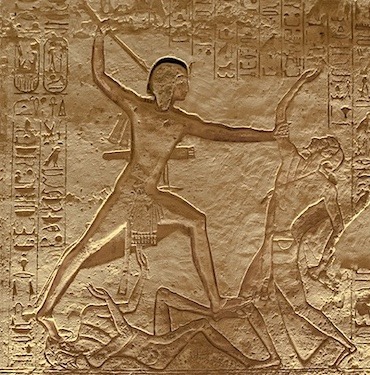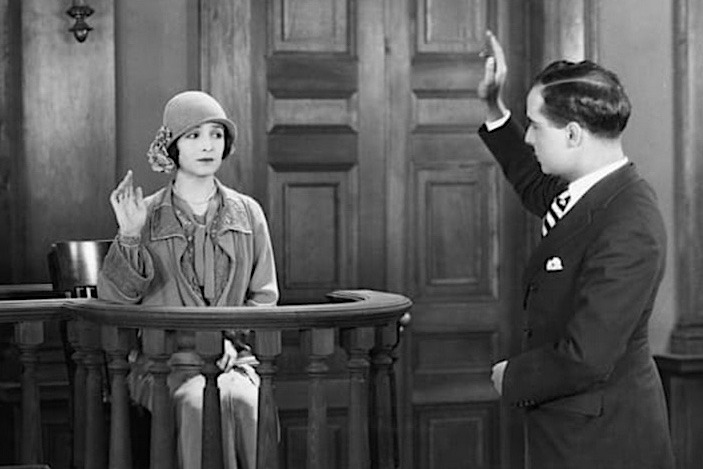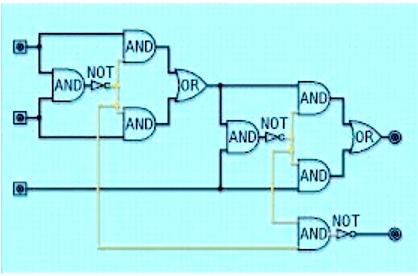Modern Bible readers are often frustrated by the fact that the Bible is full of multiple retellings of stories, and they aren’t always in exact agreement with each other. Indeed, from the very first page of Genesis we find that even the creation story itself is told two times, in Genesis 1 and 2. We also have four Gospels that don’t quite agree.

Why can’t the Bible just tell one single clear story?
Traditionalists try to harmonize multiple accounts as best as possible. Secular scholars assume that more than one account existed, and will construct a version that they think is the more factually-correct original.
One assumption among academic OT scholars is that repeated texts come from editing over time. An earlier story is included because that is what is known by the community, but later editors must have added a version that disagrees with it to correct the first one.
Another hypothesis is that different accounts come from different communities, and both must be put into a composite text to keep the peace between the two groups. Why else would you have two or more stories together?
The Ancient World had Different Assumptions
In Rabbi Joshua Berman’s book, Inconsistency in the Torah, he asserts that scholars are actually making a mistake in what they expect from an ancient text.1 Our modern assumption is that a single, unified narrative is the only acceptable way to record an event. If there are multiple versions, this is a problem that must be solved.
Dr. Berman points out evidence to the contrary preserved in ancient temples all over Egypt. One of the most widely documented events in the ancient world is the battle at Kadesh between Egypt and the Hittite Empire in 1274 BC. Pharaoh Ramses II built temples in several places where he preserved his glorious victory in carvings on walls and towers. (Of course the Hittites said the battle was a draw, but kings never admit defeat. So we don’t know the exact outcome, but we know the battle occurred.)
 What’s surprising is the fact that each Egyptian temple contains multiple versions of the story. Commonly there is a “bulletin” (a prose report of events), a long narrative poem, and then huge reliefs depicting scenes in the conflict.
What’s surprising is the fact that each Egyptian temple contains multiple versions of the story. Commonly there is a “bulletin” (a prose report of events), a long narrative poem, and then huge reliefs depicting scenes in the conflict.
What’s interesting is that these different accounts that are side by side in the temple don’t quite agree with each other! One focuses on the role of the gods in the story, and another makes it sound like Pharaoh won all by himself in spite of the deficits of his army.
If these same accounts were included in the Bible, academics would say that one was earlier and one later, and an editor had a hand in including it. But you can see that the walls of each temple were carved all at once. The Egyptians didn’t build the temple and decorate three walls, but leave the fourth wall blank for a couple hundred years so that a later carver could add another version. Also, these accounts that don’t quite agree with each other are nearly identical between the temples where they are recorded!
On the Testimony of Two or Three Witnesses
I wonder whether a command from the Torah can shed light on why multiple accounts were acceptable or even desirable to an ancient audience. Deuteronomy 19:15 says,
One witness is not enough to convict anyone accused of any crime or offense they may have committed. A matter must be established by the testimony of two or three witnesses.
There must have been a lot of crimes committed that had only one witness. Yet the Torah was willing to release many perpetrators because there is too much chance of a false conviction coming from a false witness or erroneous testimony. This law of requiring two or more witnesses is mentioned many times in the New Testament:
Matt. 18:16 But if he does not listen, take one or two others along with you, that every charge may be established by the evidence of two or three witnesses.
Matt. 26:59-60 The chief priests and the whole council were seeking false testimony against Jesus that they might put him to death, but they found none, though many false witnesses came forward. At last two came forward…
2Cor. 13:1 Every charge must be established by the evidence of two or three witnesses.
1Tim. 5:19 Do not admit a charge against an elder except on the evidence of two or three witnesses.
Heb. 10:28 Anyone who has set aside the law of Moses dies without mercy on the evidence of two or three witnesses.
Rev. 11:3 “I will grant authority to my two witnesses, and they will prophesy for 1,260 days, clothed in sackcloth.”

When you think about it, having multiple witnesses to an event is a good thing, not a thing that should cause us to agonize about not having a single perfect narrative. We are hung up with our cultural idea that important events will always be reported by one single authoritative source, not by multiple voices, each sharing a different version.
Investigators and lawyers (and murder mystery readers) will even point out that witnesses that give completely identical testimonies are strong evidence of collusion. So slight differences should be expected, if they come from truthful witnesses.
Pairs of Parables
A related phenomenon seems to be going on in Jesus’ parables. He often tells parables in pairs or triplets, as if a point can’t really be made unless it is stated in two or more different ways. You see twin parables in multiple places. They make the same point, but do so in different ways:
Hidden Treasure & Priceless Pearl (Matt. 13:44, 45-46)
Tower Builder & King Going to War (Luke 14:28-29, 31-32)
Lost Sheep & Lost Coin (Luke 15:4-7, 8-10)
Mustard Seed & Starter Dough (Matt. 13:31-32, 33; Luke 13:18-19, 20-21)2
It’s like Jesus was reinforcing each lesson by teaching it using a variety of stories, from two or more “witnesses.” His parables were often based on Scriptures, and he found texts in two different locations that make the same point. The tiny seed that grows into a huge tree comes from Ezekiel 17:23, but the tiny bit of leaven that leavens a huge loaf is from Genesis 18:6. The woman who lost her coin alludes to Jeremiah 2:32, but seeking the lost sheep alludes to Ezekiel 34:11.
Telling a story-based parable to make a theological point isn’t terribly convincing unless you can do it in more than one way. It’s even better if the idea can be found multiple places in Scripture. It makes sense that this was how Jesus and others Jews established the credibility of the ideas they found in the biblical text. It seems that the principle of “two or more witnesses” came in handy even here.
“Greek” Brains and Luria’s Experiment
Considering all of this, it seems that we could say something about the difference between the “Greek” (Western) way of establishing truth versus the “Hebrew” way of doing so. The Western way is to elegantly reason from presuppositions toward a logical conclusion, removing extra data if it is in any way contrary, because what is convincing is a single, perfect, unified narrative.
In contrast, the Hebraic way of establishing truth is to share multiple accounts of a story or event. Multiple voices in semi-agreement are more convincing than one flawless story that may have left things out in order to achieve utter perfection.
In the 1930’s, a psychologist in the Soviet Union named Alexander Luria wanted to know whether indigenous peoples who were illiterate were capable of analytical reasoning and higher thought. He went to remote villages and asked people questions like:
In the far north, where there is snow, all bears are white.
Nova Zemla is in the far north, where there is always snow.
What color are the bears there?
The response he expected was of course, “white.” This is classic Greek-style syllogistic reasoning, where two premises are asserted, and then deductive logic is supposed to be used to come to a conclusion. Yet his subjects did not respond the way he expected. Rather, they’d say something like:
Your words can be answered only by someone who was there, and if a person wasn’t there he can’t say anything on the basis of your words…. If a man was sixty or eighty and had seen a white bear and had told about it, he could be believed, but I’ve never seen one and hence I can’t say.
 Some of them would say, “Given your words they should be white,” showing that they understood the question and logic within. But they had no experience with logical premises and didn’t accept the statements that they were given.
Some of them would say, “Given your words they should be white,” showing that they understood the question and logic within. But they had no experience with logical premises and didn’t accept the statements that they were given.
Of course Luria concluded that he was speaking to ignorant, primitive peoples who were incapable of higher reasoning.
But the villagers were just as unimpressed with him and his questions. How can anyone proclaim that every bear in the north is white without seeing every last one of them? Who had ever done such thing?
Notice that what the villagers would find convincing is if they had heard the testimony of a witness, preferably it was from an aged and trustworthy man who had traveled there. Like the Bible they too assumed that truth is established by witnesses, not by elegant syllogisms.
Keep this in mind next time you struggle with the Bible’s lack of analytical reasoning, and its habit of retelling stories and parables. For much of humankind over history, the testimony of multiple witnesses has been far more convincing than the airtight argumentation of Western rationalism.
~~~~
1 I highly recommend Inconsistency in the Torah: Ancient Literary Conventions and the Limits of Source Criticism (2017, Oxford) by Joshua Berman, who teaches at Bar Ilan. Berman is an excellent scholar who is not afraid of using scholarly methods to probe the limits of scholarly skepticism. The book is somewhat advanced and assumes that readers are familiar with the Documentary Hypothesis and textual criticism of the Hebrew Bible. A very good interview with Berman is available about this book on the OnScript podcast.
2 See Jesus’ Twin Parables by David Bivin at JerusalemPerspective.com.
3 From “Mythic Discourse” by Lenn Goodman in Myths and Fictions, eds S. Biderman and B Scharfstein (Brill, Leiden, NL: 1993) p 96-98.
For more on this topic, see the chapter, “Greek Brain, Hebrew Brain” in my book Reading the Bible with Rabbi Jesus.
Clifton Payne says
Excellent
Vicki Newby says
Great article. Very interesting!
LJ says
So interesting, thank you. 🙂
Annette says
Love this. I was a teacher for 30+ years and know if something really bad happened, e.g. a fight between two boys, the amount of stories you get equals the amount of pupils that was present when it happened.
Calvin Hanson says
Great read! Thank you!
Barbara Hyland says
Yes. Our Western minds with our Greek logic wants everything to harmonize. God is a God of mystery. If we’d could explain and understand these mysteries we would be as God. This is where faith comes in.
Thanks for this great writing!
Scott Ashley says
Thanks for a most interesting article!
Doug Ward says
There are a couple of times in the Torah where God gives some instruction about something, then comes back and gives more instruction that fills in some details. Here I am thinking of Gen 6:13-22, followed by 7:1-5; and Num 14:20-25, followed by 14:26-35.
I’m guessing that in these cases, the JEDP folks suppose that a clumsy editor is juxtaposing accounts from two different writers. But I think what we’re seeing here is a particular literary style that a single narrator is using.
People have a tendency to claim there are “contradictions” in these doublets—e.g., one pair of animals versus 7 pairs in Genesis 6-7, or “Caleb” versus “Joshua and Caleb” in Numbers 14. But viewing such things as contradictory comes from reading these accounts in an inappropriately hyperliteral way that doesn’t take the culture or genre into account.
We all need a course in reading ancient literature.
Jimmy Khanyile says
Helpful indeed, thank you.
Sal J Russo says
Very interesting article Lois. Clears up some of the confusion I run into when I read various accounts in the Bible. Thanks!!
Tim Feia says
Very insightful…very helpful in reading some of the biblical accounts of various recorded events. Very helpful.
Peter Kevan says
A really interesting article. I wonder whether the differing accounts of Jesus’ resurrection in the gospels could be considered a similar manner: different does not equal lacking in veracity, but actually corroborates the story!
Travis says
Are you available to do an audio podcast with me for my site that focuses on Fathers and Mentors? If so please reach back to me via my site at:
http://www.agoodword4today.com